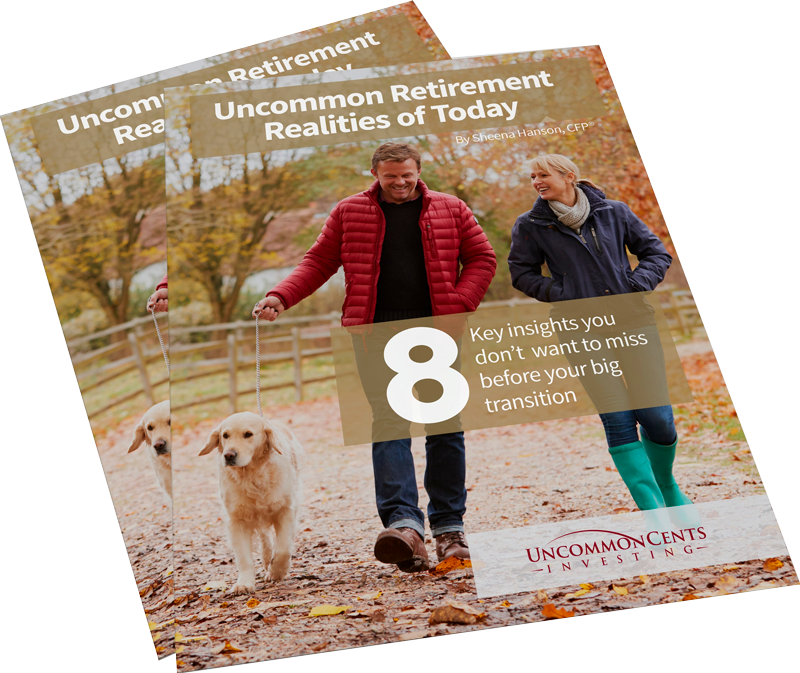Your working life is almost over, but the work isn’t done yet.
With just five years until you retire, it can be tempting to just coast the rest of the way and sit back and imagine all the things you want to do and all the places you want to see. However, there are a few more things you must do in order to ensure you are all set.
Here are five steps to take in the home stretch to master your retirement income plan:
1. Get Debt Free
With retirement comes freedom and money can buy freedom, but not if you’re weighed down by making payments to anyone but yourself. Mortgage(s), car payments, credit cards, your kids’ student loans, that HELOC you took out to renovate the kitchen, etc. Those should all be paid off before you make your exit.
When you replace your paycheck with other forms of income, any form of debt will drag you down and the last thing you want to be doing is shelling out to creditors instead of using your money, interest free, for the things you enjoy in retirement So do everything you can to get rid of all debt even if you have to give up your daily Starbucks run. Making sacrifices now will pay off big time later.
2. Nail Down Your Budget
You need to formalize your budget next. You won’t be able to just wing it in retirement and hope your money will last. Plus, your income and monthly expenses will likely be different in retirement than they have been before. Do you plan to downsize your house? Will you be relocating? Are you planning to travel and live it up? Take stock of everything and then do a line-item budget so you have a guide to follow.
Many people retiring locally have modest spending habits as it is, but a budget at least helps create awareness around your money and spending habits. If you’ve never had a budget before, start following one right away so that it isn’t new all of a sudden when the single biggest financial change in your life occurs.
3. Evaluate your Future Income sources and Any Gaps
One of the most frequent questions we get, hands down, is ‘How much do I need to Retire?’
There is no easy answer to that question, but it starts with evaluating desired income needs and future income sources. You’ll want to dig up your social security statement or log-in online at socialsecurity.gov to understand your benefits. Also, if you have a pension, evaluate your options and payout amounts. Will you work part-time in retirement? Do you have rental property or other passive income sources?
Evaluate how much income you can safely withdrawal from your personal savings. Another primary concern of retirees is outliving your nest egg. Supplementing income from retirement accounts, taxable accounts, annuities, and cash in the bank is normal, but it needs to be planned out with various risks in mind.
Don’t lose hope if you find you have an income gap and need to make up some ground, just figure out a solution that will work best and get to work. Options can range from accelerating your savings or re-evaluating your social security plan to considering working longer to make up the difference.
Hopefully, you’ll be on the other end of the spectrum and have the lucky problem of having an excess. In that case, you’ll have the confidence and peace of mind that your retirement planning is right on track!
4. Consider Tax Implications
Just because you aren’t drawing a paycheck anymore doesn’t mean that Uncle Sam no longer gets a cut. Like a skilled gymnast, you will want to walk a tight line between having enough cash flow and not increasing your tax liability.
Most investors have at least one tax-deferred account, such as a 401(k), as those had been the most popular (sometimes the only option) retirement savings accounts for a long time. When you take money out of those accounts, you pay taxes. On the flip side are accounts whose contributions were made with after-tax dollars, such as Roth IRAs. Because you already paid taxes on that money, you don’t have to pay again. Taking too much out of tax-deferred accounts early in retirement can increase your income tax rate. But you also have to be careful not to delay your withdrawals too long, causing you to take bigger required minimum distributions (RMDs) later on. That too would push you into a higher tax bracket.
By threading the needle successfully, you’ll be able to keep more of your money and also allow your investments to compound for as long as possible.
5. Meet with an Advisor
Retirement income planning is a delicate dance, even beyond the complexity of tax implications. Having a financial advisor as your partner to guide you through all the hoops and obstacles can make it a lot less stressful.
As an everyday investor, you only know what you know. And you don’t know what you don’t know. But your financial advisor does…know. (Sorry, we couldn’t help ourselves.)
Your advisor should work with you to build a retirement income plan, keep you accountable for completing the necessary steps to prepare, and be there to lean on before and during retirement.
If you need a guide, we encourage you to reach out to us. We serve clients locally in Janesville, WI as well as virtually throughout the country.
Sheena is a highly regarded financial professional known for her clear explanations and practical advice on complex financial matters. She earned her CERTIFIED FINANCIAL PLANNER™️ designation in 2010 and holds a Bachelor of Science degree in Finance from the University of Wisconsin LaCrosse.



